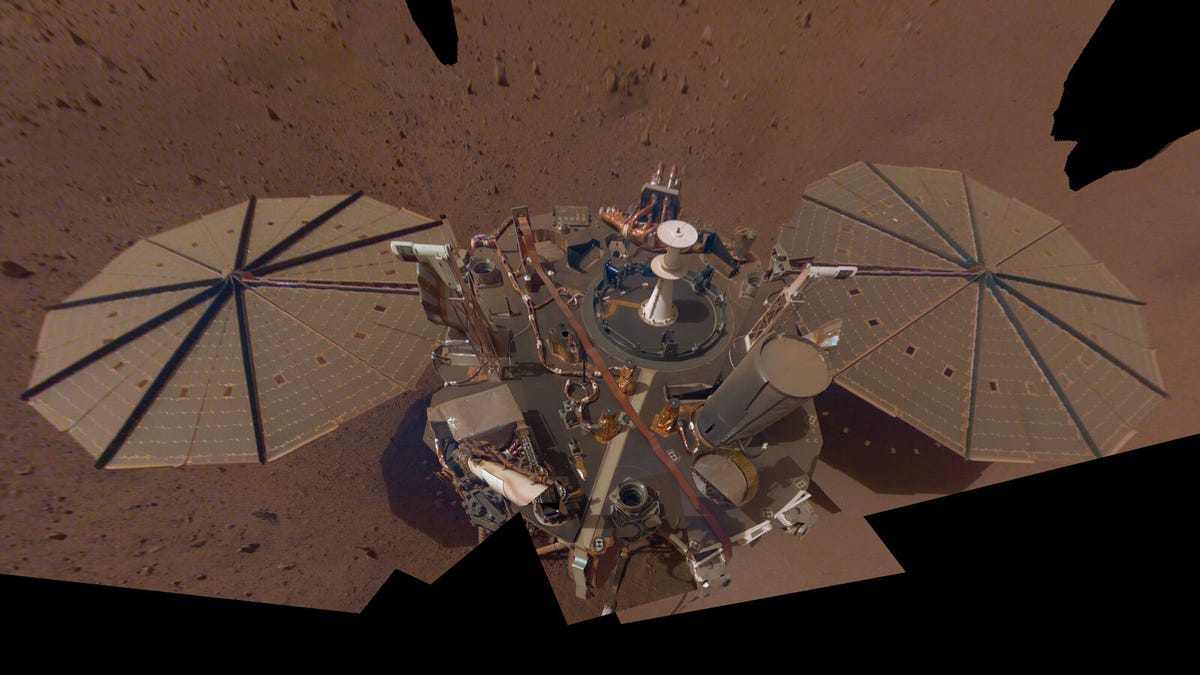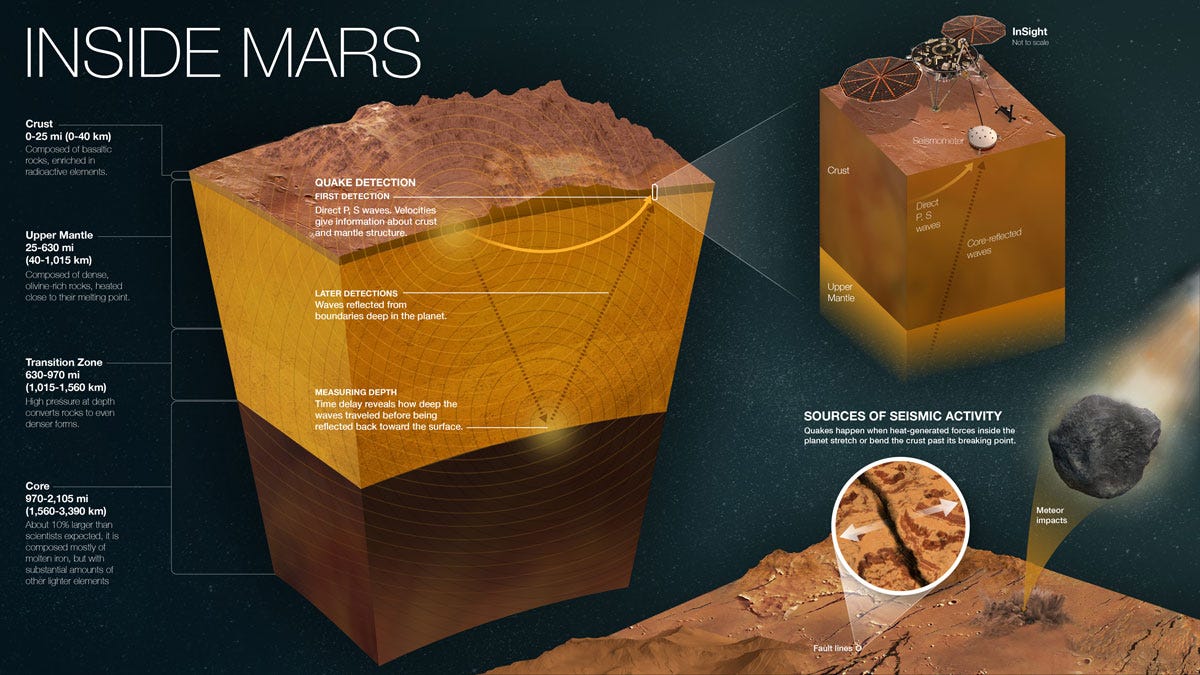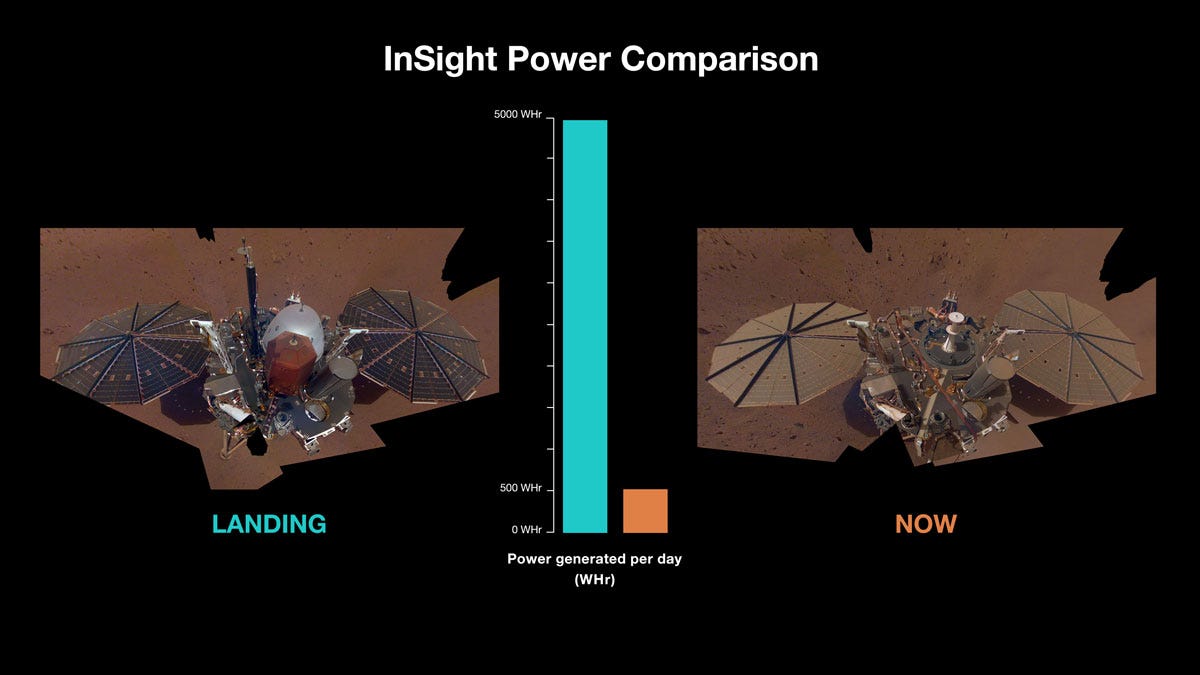After mapping out the inside of Mars, NASA’s InSight mission ends this year | ZDNet

This is NASA InSight’s second full selfie on Mars. Since taking its first selfie, the lander has removed its heat probe and seismometer from its deck, placing them on the Martian surface; a thin coating of dust now covers the spacecraft as well.
NASA/JPL-Caltech
NASA’s InSight Mars lander will end its scientific mission this summer and will be entirely inoperable by the end of this year after it loses power, NASA said Tuesday. While the mission is ending, the legacy of the lander is just taking shape, as scientists study the “unprecedented” data that Insight collected on the deep interior of Mars, as well as its weather and magnetic field.
“Before InSight, the interior of Mars was a giant question mark,” Bruce Banerdt, InSight principal investigator for NASA’s Jet Propulsion Laboratory, said to reporters on Tuesday. “We just had this really fuzzy picture of what was going on inside Mars. Now we can actually draw a quantitatively precise picture.”
And while InSight will slowly wind down this year as it loses power, it’s still collecting valuable data. On May 4, InSight detected a magnitude 5 marsquake — the largest quake it’s recorded by a factor of 10.

NASA/JPL-Caltech
Thanks to all of the data InSight has collected, scientists can approximate within 10 km the thickness of Mars’ crust, as well as the size of its core within 50 km.
That particular information, Banerdt explained, “allows us to now go back and look at our models of planetary formation, look at how the planets evolved from a cloud of dust circling around the sun.”
With the new data, he said, “we’ve already been able to eliminate probably two-thirds of the models for planetary formation that are out there, just by looking at the size and density of the core and the thickness of the crust.”
Since its landing on Mars in November 2018, InSight — short for Interior Exploration using Seismic Investigations, Geodesy and Heat Transport — has been measuring the waves traveling through the interior of the planet with a seismometer. InSight also brought to Mars a probe to measure the planet’s internal temperature and heat flow. However, the device — nicknamed the “mole” — ran into an unexpected crusty layer in Mars’ soil, so it couldn’t get down far enough to take its intended measurements.
The problems with the mole were “probably the biggest disappointment of the mission,” Banerdt said. Still, he said, the primary goals his team first established for InSight were all accomplished. In fact, the mission’s primary science goals were achieved in its first Mars year (nearly two Earth years), and the lander is now on an extended mission.
The data collected over the past three and-a-half years, as well as the data that InSight continues to collect, is all archived and available to the entire scientific community. It should be valuable “for decades to come,” Banerdt said.
Why is the mission ending now?
While InSight is still collecting data, the lander has gotten very dusty. It’s so dusty that its two, approximately 7-feet wide solar panels are producing significantly less power than they were initially. At the start of its mission, the InSight’s solar panels produced around 5,000 watt-hours each Martian day, or sol – enough to power an electric oven for an hour and 40 minutes. Now, they’re producing roughly 500 watt-hours per sol – enough to power the same electric oven for just 10 minutes.

The lander’s first full selfie, which shows clean panels, was taken in December 2018; the dusty selfie (at right) is from images taken in March and April 2019.
NASA/JPL-Caltech
On top of that, seasonal changes on Mars will make it even harder for the solar panels to produce power. Over the next few months, there will be more dust in the air, reducing sunlight.
So this spring, NASA will be running the seismometer continuously, and its operations will wind down until it’s turned off towards the end of the summer. Meanwhile, InSight’s robotic arm will soon be put in a resting position, called the “retirement pose,” that will allow it to take pictures. When InSight is at very low power, it will still be able to take some images until it’s completely retired at the end of the year.
For all the latest Technology News Click Here
For the latest news and updates, follow us on Google News.
